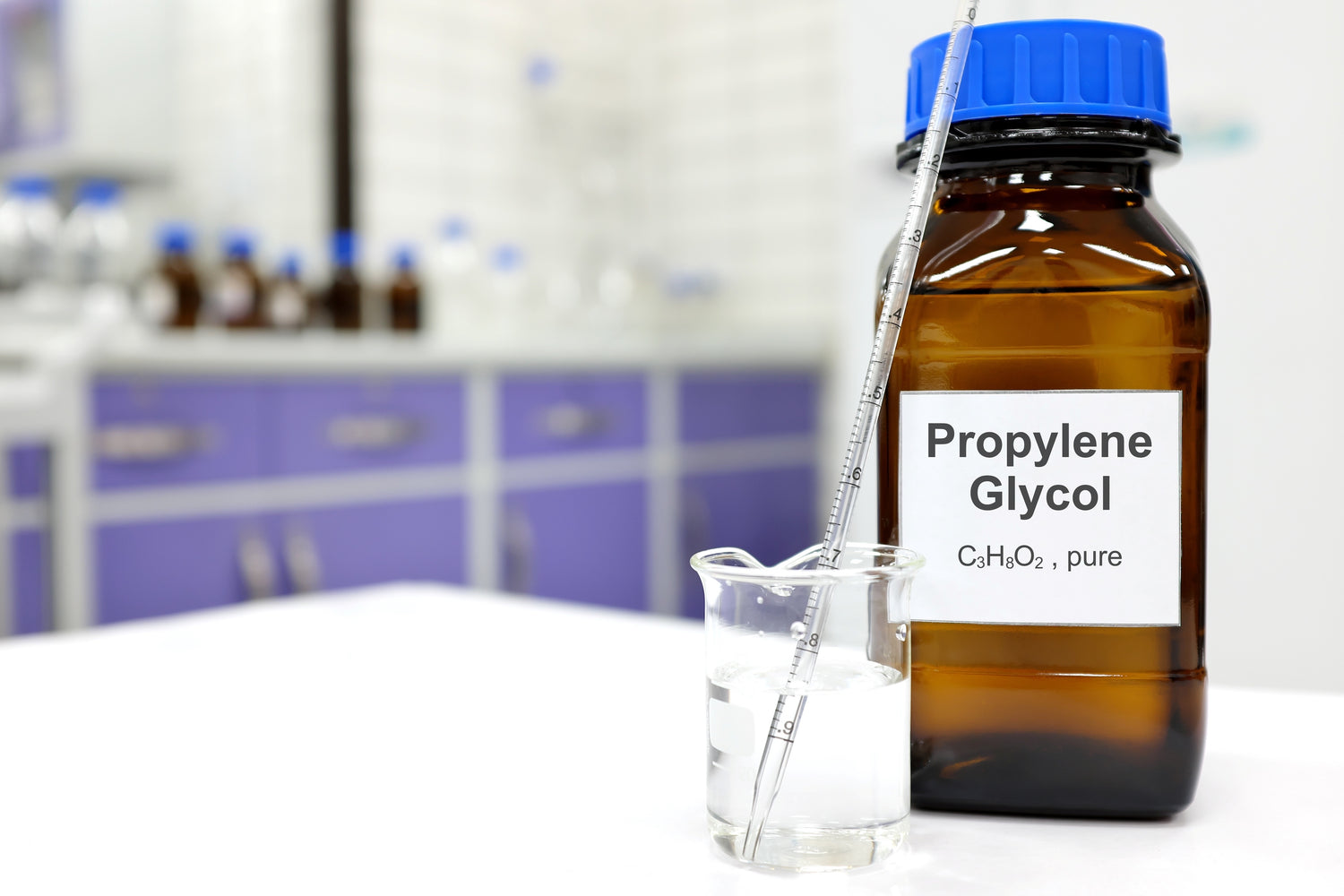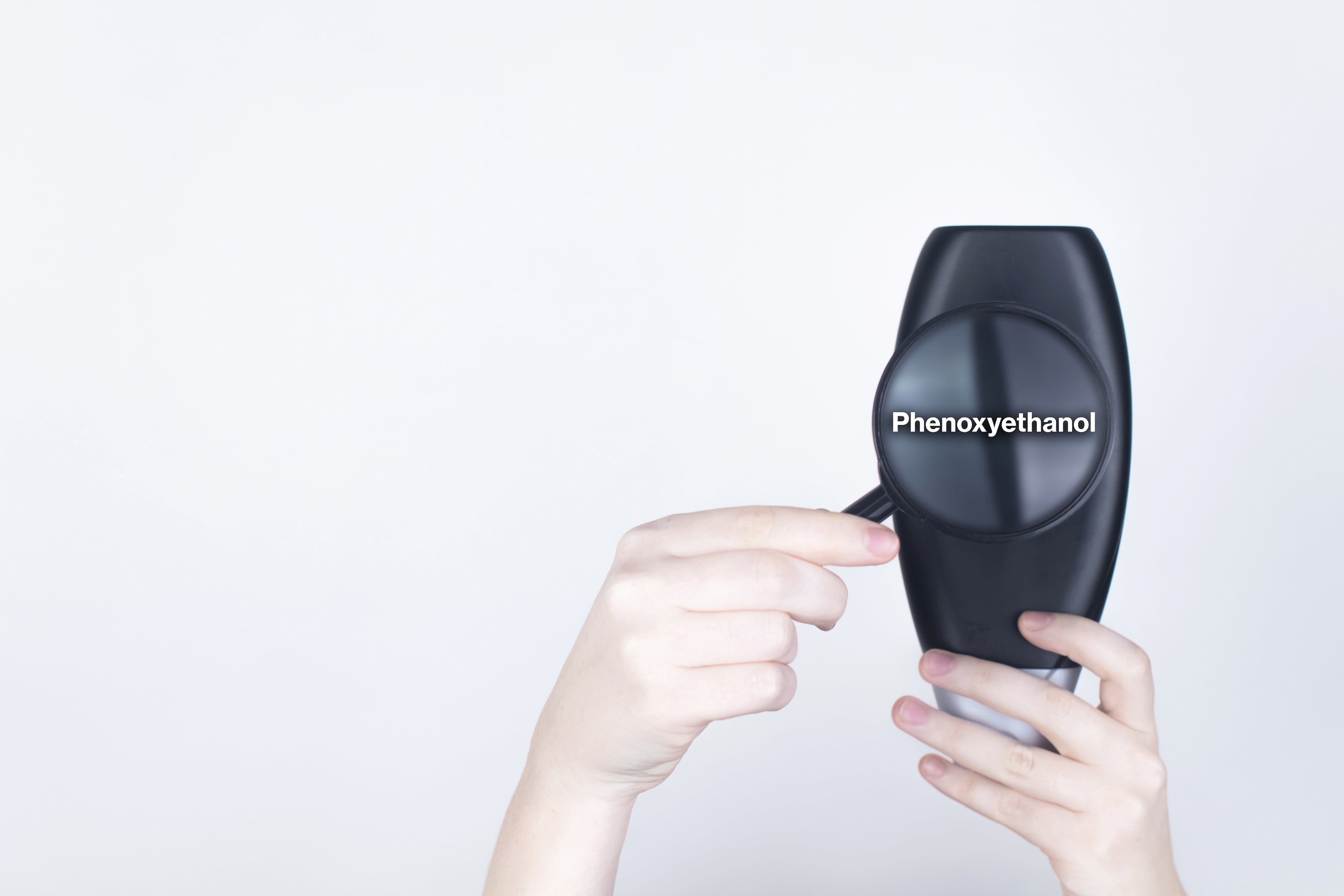At Cottonique, we always remind people with skin conditions and sensitivities that the size or quantity of a substance doesn't determine its potential harm. After all, even the tiniest allergen can trigger flare-ups of immense discomfort.
In 2018, the American Contact Dermatitis Society named an ingredient common to many cosmetics, topical skin products, foods, medications, and even clothing the Allergen of the Year due to its increasing prevalence and potential risks for individuals with skin allergies and sensitivities.
The annual recognition draws attention to allergens that are "very common, under-recognized, [and] merit more attention because they are causing significant allergic contact dermatitis or are no longer causing significant relevant disease."
The allergen in question? Propylene Glycol.
WHAT IS PROPYLENE GLYCOL

According to MDedge, only two to three percent of allergy cases involve PG. Dermatologists felt the need to advise people with skin allergies and sensitivities to "stay away from it" because the substance is so widespread in most skincare products, cosmetics, coated pills, topical medications, food products, and other items.
As defined by the Contact Dermatitis Institute (CDI), propylene glycol (PG) is a small, synthetic alcohol used as a softening agent, preservative, humectant, and solvent in various consumer products such as cosmetics, fragrances, topical medications, soaps and cleansers, hair care products, and deodorants.
This synthetic alcohol, which has the chemical formula CH3-CHOH-CH2OH, is also employed as an intermediate in the manufacture of polyester, which may in some people lead to allergic contact dermatitis. Due to its adaptability, it is a common ingredient in numerous products across various industries.
In addition to oral treatments and a variety of foods, the production of industrial fluids like solvents, thinners, antifreeze, de-icing fluids, desiccants, brake fluids, and polyester resins also uses PG. It has several alternate names, including:
- 1,2-propanediol
- Propane-1,2-diol
- 1,2-dihydroxypropane
- 1,2-propylene glycol.
WHAT ARE THE EFFECTS OF PG?

While it is generally considered safe for most individuals, some people with skin allergies and sensitivities may experience adverse reactions when exposed to propylene glycol. Here are some potential dangers and concerns associated with propylene glycol for individuals with such conditions:
1. Skin Irritation
In people with sensitive skin, PG can irritate their skin and trigger allergic reactions. Redness, itching, swelling, rashes, and hives are typical symptoms. Also, those who already have skin issues like eczema or dermatitis may be more prone to these reactions, commonly characterized by redness, itching, swelling, or rash.
2. Allergic Contact Dermatitis
Prolonged or repeated exposure to PG may lead to allergic contact dermatitis. Skin that is inflamed, itchy, and blistered is indicative of this condition. When using products containing PG, people with known skin allergies or contact dermatitis should exercise caution since prolonged exposure to the said substance may sensitize the skin.
The most frequent location for PG symptoms to manifest was the face (25.9%), followed by a generalized or scattered pattern (23.7%), according to data gathered by the North American Contact Dermatitis Group from 1996 to 2006.
Researchers hypothesize that the prevalence of allergic contact dermatitis to propylene glycol in people with eczema or fungal infections, which are very common in nations with less exposure to sunlight and lower-than-normal vitamin D balances, may be higher than 2%. Consequently, PG is more prevalent in those nations.
3. Eye and Respiratory Irritation
In some cases, breathing in propylene glycol vapors or mists can irritate the eyes and trigger respiratory issues like coughing, wheezing, or shortness of breath. This is more likely to happen in workplace environments where the air contains a higher amount of PG.
4. Systemic Effects
Despite being extremely uncommon, some people who consume or absorb large amounts of propylene glycol may experience systemic effects such as headache, dizziness, nausea, and in severe cases, even seizures.
Contemporary Clinic, on the other hand, also echoed the same thing about the system effects of PG, stating that most patients will develop rashes within 3 to 16 hours of ingesting food or medication containing PG.
"Although this is rare... PG is ubiquitous in food, especially packaged foods, pieces of bread, canned foods, bacon, dairy products, condiments, artificial flavor extracts, and food colorings. It is present in almost all fast food," it said.
WHO ARE SUSCEPTIBLE TO PROPYLENE GLYCOL ALLERGY?
According to DermNet, contact allergy to PG is not very common, with an estimated presence in up to 3.5% of individuals who are being evaluated for suspected contact dermatitis. However, it may be more prevalent in certain groups, such as atopic patients and individuals with compromised skin conditions like stasis dermatitis or hand dermatitis.
"This is noteworthy, given corticosteroids (a common source of propylene glycol contact allergy) are typically the first-line treatment for dermatitis," it said. "Allergic contact dermatitis to propylene glycol via occupational exposure is less common but has been reported in the mechanical and motor vehicle, and printing industries.”
HOW IS PROPYLENE GLYCOL ALLERGY DIAGNOSED?

In the same article, DermNet reported that patch testing is used to diagnose someone with a contact allergy to PG. For ingestion and inhalation allergy testing, skin prick tests are used.
Although the best tool that dermatologists utilize to determine that someone has a contact allergy to PG is through patch testing, the appropriate concentration and optimal reading intervals for patch testing PG have been subjects of debate for several years and remain to be determined.
"Propylene glycol is included in some standard patch test series. It is important to consider propylene glycol and other allergens not included in all standard series, particularly in patients with atopic or otherwise chronically inflamed skin," it said, emphasizing that PG is a “weak sensitizer and also an irritant.”
“Many reactions are weak, which may be incorrectly interpreted as insignificant, and delineating true allergic versus irritant reactions can be challenging,” it added.
HOW TO AVOID CONTACT WITH PROPYLENE GLYCOL?

As advised by the CDI, people with skin conditions and sensitivities should avoid products that list any of the following names in the ingredients:
- Propylene glycol
- 1,2-Propanediol
- 1,2-Dihydroxypropane
- 2-Hydroxypropanol
- EINECS 200-338-0
- EPA Pesticide Chemical Code 068603
- Isopropylene glycol
- Methylethyl glycol
The most common sources of propylene glycol contact allergy are:
- Personal care products
- Medications
- Other
You may see the list of products that contain PG here.
IS PROPYLENE GLYCOL USED IN CLOTHING?
Although PG is not a frequent component or additive in clothing, some fabrics or textiles used in the manufacture of clothing may be treated or finished using the said substance. In order to improve their ability to manage moisture, some specialty fabrics, such as performance clothing, moisture-wicking textiles, and other activewear may be treated with water-repellent coatings or finishes containing PG.
Reading clothing labels and choosing fabrics that are less likely to aggravate skin sensitivities, like natural fibers like cotton or organic materials, are wise choices if you are worried about potential allergens or irritants in clothing. If you have any particular allergies or sensitivities, you may want to wash any new clothing before wearing it to get rid of any leftover chemicals from the manufacturing process.
The fabrics they are wearing may be to blame, despite the fact that people with skin conditions frequently attribute flare-ups to their laundry detergent. Because natural fabrics, like 100% organic cotton, are less likely than synthetic ones to contain harmful substances like glycol, we always advise our customers to choose clothing made from them.
WHAT TO WEAR?
At Cottonique, we made the decision to create hypoallergenic clothing free of harmful synthetics, toxic chemicals, and harsh elastics because we think that consumers are frequently unaware of what is contained in their clothing.
Our allergy-free collections, which range from tops and bottoms to masks and other accessories that aid in symptom relief, are made with GOTS-certified 100% organic cotton. No latex, no spandex, and no formaldehyde.
If you are seeking clothing options that prioritize safety for individuals with skin allergies and sensitivities, explore our collection of allergy-free clothing meticulously crafted from 100% organic cotton. These garments provide a comfortable and synthetics-free experience, allowing individuals to live with ease while maintaining skin health.
For individuals with skin conditions and sensitivities, it's important to avoid chemically-treated fabrics like spandex or elastane since they contain polyurethane and polyethylene glycol. If you're seeking hypoallergenic alternatives, we suggest exploring recent customer purchases from those who have a propylene glycol allergy:
Giving the greatest fit, smoothest protection, and finest comfort for sensitive feet.

The perfect balance of allergy-free function and quality comfort

Allergy-free underwear that prevents most panty problems


Soft, durable, and allergy-free undergarment
TAKEAWAY: It is essential to have a good understanding of PG sensitivity and allergy symptoms, especially for individuals who experience adverse reactions. If you suspect that you may be allergic to PG, make sure to thoroughly check the ingredients of your hygiene products and consider using organic cotton clothing products. Additionally, if you develop a rash with severe swelling or burning of the skin, it is crucial to seek immediate medical attention.
DISCLAIMER: The information presented on Cottonique is not, and will never be, intended to be a substitute for professional medical advice, diagnosis, or treatment. All content materials found on this site, from text, treatments, outcomes, charts, graphics, photographs, and study findings, are created and published for general informational purposes only. It should not, in any way, be construed as a standard of care to be followed by a user of the website.
Thus, readers are encouraged to verify any information obtained from this website with other accurate references and review all information regarding any medical condition or treatment with their physician. As Cottonique strives to help those with allergies live with better days, the hypoallergenic apparel brand encourages everyone to always seek the advice of their physician or other qualified health providers with any questions they may have regarding a medical condition.




Hinterlasse einen Kommentar
Diese Website ist durch reCAPTCHA geschützt und es gelten die allgemeinen Geschäftsbedingungen und Datenschutzbestimmungen von Google.